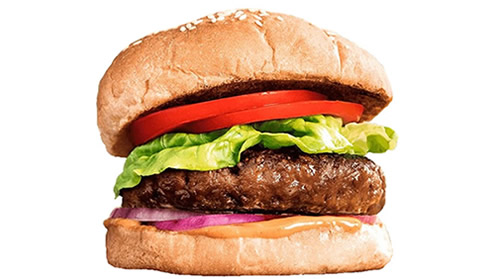If you have not been following the development of several plant-based meat substitutes, it’s time to get a full briefing. Better yet, I would encourage you to seek out a product for tasting like I did. In the meantime, consider at least thinking about diversification, maybe into peas, one of the chief ingredients in one of the internationally distributed plant-based meat substitutes. All humor aside, most previous attempts at artificial meat production and associated products (hot dog shaped wads of pulverized plant material and spices) have not been widely accepted by consumers except for small niche groups practicing certain religious beliefs that compel no meat consumption or those living a vegetarian/vegan lifestyle regardless of religion. All of that has changed dramatically in the last 12-18 months and will very likely displace a significant amount of animal meat consumption and therefore production in the next 3-5 years.
The demand for meat alternatives that taste like meat and have a believable meat texture are natural winners in the current socio-political-environmental milieu. All of this of course depends on the ingredients needed for meat alternative production and their unique input demand structures (such as arable land, water/irrigation, assembly, processing methods (energy intensive or energy neutral/offset etc.), transportation and refrigeration and of course full distribution. The key inputs, land, water and energy are already advertised as being dramatically reduced compared to meat production.

This net difference in input demand requirements plus the absence of animal welfare issues, manure/odor management and methane gas expulsion reductions are likely to catapult vegetable based meat products into the clear winner category with environmentally conscious consumers and those seeking to reduce or eliminate meat in their diets.
Everyone touting the miraculous end of animal suffering, the “factory farm” and the cooling of the atmosphere, all from the adoption of plant based meat displacing global animal production never seem to examine all the secondary consequences of such transformations. Let’s postpone to another article a discussion of the true net tradeoffs such as the reduction in manure fertilizer benefits and the tradeoff in ramping up production of nitrogen based artificial fertilizer production etc. and all the rest including a full spectrum of potential nutrient deficits.
The now exponential increase in the popularity and the production and distribution of plant based meat-like products is resulting in a larger and larger set of products reaching into the breakfast table (by far the biggest source of demand in the hotel, restaurant and institutional sector for pork in the United States). Pork has owned breakfast in the US, but plant-based sausage patties especially are already being distributed at major national food chains which serve breakfast and especially breakfast sandwiches such as sausage-on-a-biscuit type menu items.
One of the products had a large trial going on with a major fast food chain in the US which serves flame grilled hamburgers. The initial trial in St Louis, Missouri with several establishments was reported to be a “raging success” and last week, the firm rolled out the availability of the product in over 7,000 of their establishments nationwide. The only objection was the plant burgers were being cooked on the same surface as the meat hamburgers which made purists a bit nervous. Look for that problem to be addressed rather quickly.
How ready are the global pork, beef and poultry sectors for up to 25% of their current production to be offset by these products in the next five years? Pressure is already being brought to bear on all major sellers of meat and meat products (especially fast food) to provide this alternative now that a product exists which is seemingly a decent substitute. Most companies can’t withstand the outrage machine when it gets geared up and aimed at their social media.
It seems at least plausible that a two-tiered system will develop with rapid adoption by first world consumers leading to substantial demand reductions for countries specializing in the production of animal products. Who is ready for this? What can be done? Crashing meat demand from first world countries will lower price and result in more real meat distribution to 2nd and 3rd world markets which heretofore could not afford big volumes at current world prices.
No one is going to make a believable plant based Jamon de Bellota (may I say thank God for this) but ground meat products like hamburger, processed and fresh sausages like chorizos, fuet, bratwursts, bolognas etc. are squarely in the crosshairs. Ground meats are used around the world in almost every culture. Foods such as hamburgers, burritos, empanadas, tacos, the ground meat kheema’s and curries of India/Pakistan, Asian sausages, kabob stands, stuffed dumplings and meatballs, the meat pies of the UK, supply your own list from your hometown area.
Meat of various kinds and its unique preparation, spices and presentations have deep seated connections to religious and cultural beliefs that plant based concoctions seem unlikely to displace in the short run at least. In the meantime, better think hard about diversification strategies and how to cope with gradually eroding demand. Buying their stock is probably a more efficacious diversification strategy than growing peas for most folks. Change is on the way and sooner than you probably expected.






